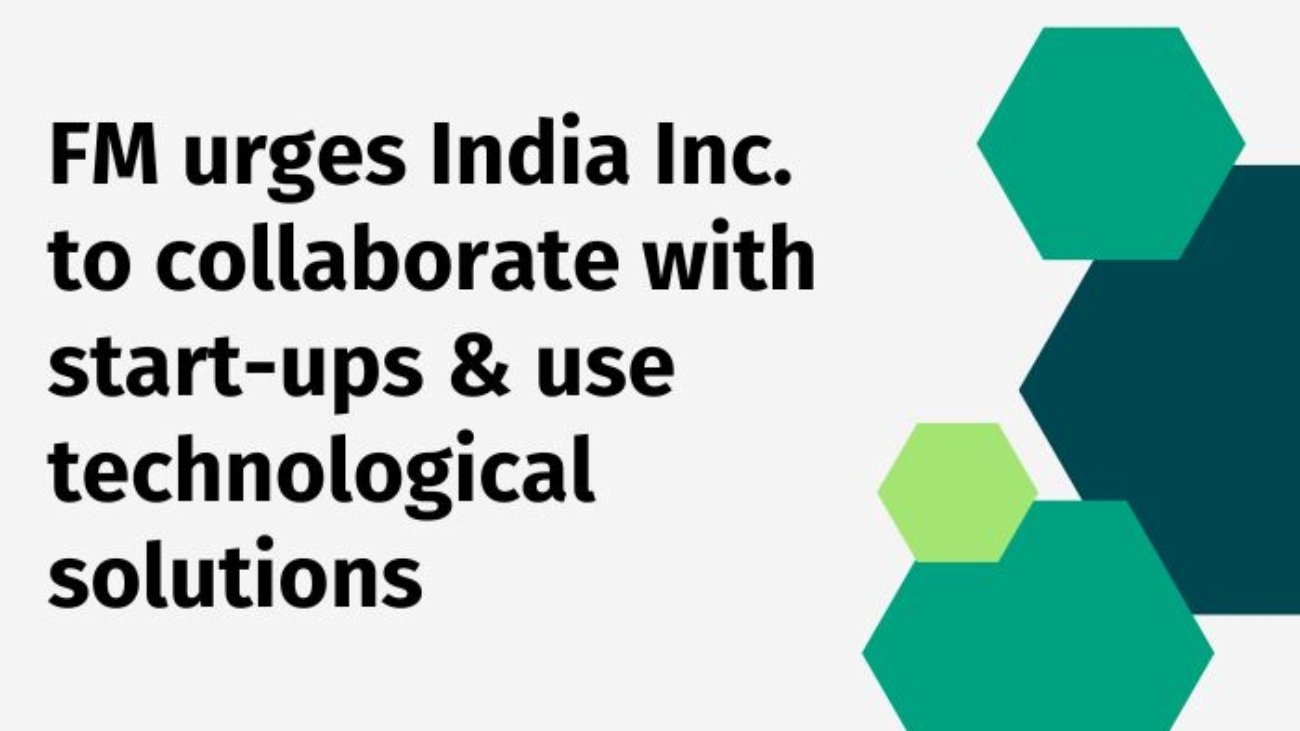FM urges asked the sector to come up with novel technology and investment ideas as well as novel ways to collaborate with entrepreneurs to find answers.
India Inc. has a lot to gain from collaborating with start-ups and implementing technological solutions. Start-ups bring in a wealth of knowledge and experience, while technological solutions can help streamline operations, improve customer service, and increase efficiency. By leveraging the expertise of start-ups and technology, India Inc. can become more competitive in the global market.
This article will discuss how India Inc. can benefit from collaborating with start-ups and implementing technological solutions such as artificial intelligence (AI), machine learning (ML), blockchain technology, Internet of Things (IoT), cloud computing, etc., to improve their operations.
It will also provide use cases that demonstrate how these technologies have been used to create successful business models for Indian companies.
Explore Benefits that Come With Collaborating with Start-Ups and Technological Solutions
In today’s world, the potential benefits of collaborating with start-ups and using technological solutions are immense. Start-up companies often have access to cutting-edge technology and can provide innovative solutions to complex problems.
FM urges by leveraging these resources, businesses can unlock new opportunities and improve their efficiency. Furthermore, start-ups often offer unique services that can help businesses stay ahead of their competition. Technological solutions also provide a range of advantages such as increased automation, improved data management, and faster decision making.
Therefore, it is important for businesses to explore the potential benefits that come with collaborating with start-ups and using technological solutions in order to remain competitive in today’s ever-evolving marketplace.
Why India Inc. Should Invest in Start-Ups for Their Long Term Growth
India Inc. has been at the forefront of innovation and growth in the past few decades. The emergence of start-ups has further accelerated this process and given India Inc. an opportunity to invest in new ideas, technologies, and products for their long-term growth.
Investing in start-ups can be beneficial for India Inc. as it can help them gain access to new markets, technologies, and ideas that can help them stay ahead of their competition. Additionally, investing in start-ups also provides India Inc. with an opportunity to diversify their portfolio and increase their chances of success in the long run.
With the right investments, India Inc. can ensure that they remain competitive and profitable even during uncertain times.
FM urges to come up with novel ideas for technology and investment, as well as novel ways to collaborate with entrepreneurs to find answers.
How to Identify the Right Start-Ups to Invest In
Investing in the right start-up can be a great way to make money and build wealth. However, it is important to identify the right start-ups to invest in. There are many factors that need to be taken into consideration when evaluating a potential investment.
This includes assessing the team behind the start-up, understanding their business model, evaluating their competitive landscape, and performing due diligence on their finances. By analyzing all of these factors, investors can make informed decisions about which start-ups they should invest in.
The Advantages of Using Technology for Business Operations and Processes
Technology has revolutionized the way businesses operate and processes are carried out. It has allowed businesses to streamline their operations, reduce costs, increase efficiency, and improve customer service. With the help of technology, businesses can automate mundane tasks, reduce manual labor, and focus more on core operations that require human intelligence.
Technology also allows organizations to access data quickly and accurately in order to make better decisions. In addition, it enables companies to stay competitive in the market by providing customers with innovative products and services.
FM urges by utilizing technology for business operations and processes, organizations can remain agile and efficient while ensuring customer satisfaction.
How Companies Can Leverage Technology To Enhance Their Productivity & Competitiveness
In the modern business world, technology has become an essential tool for companies to stay competitive and improve their productivity. By leveraging technology, companies can increase efficiency, reduce costs, and gain insights into their operations.
Technology also allows businesses to access new markets and customers in ways that were not possible before. Companies can use technology to automate processes, streamline communication, gather data, and develop innovative solutions that help them stay ahead of the competition.
With the right technology in place, businesses can remain competitive while improving their overall performance.
Key Points
- On Tuesday, Indian business was urged by finance minister Nirmala Sitharaman to collaborate with startups and incorporate their ideas when creating new goods.
- She also asked the leaders of the Indian business community for “out-of-the-box” suggestions on what can work as a catalyst to increase investment.
- Sitharaman said at the CII post-budget interaction with CEOs, “So I would suggest working together with startups for products… or for technological necessity is the need of the hour, and you should now unhesitatingly partner to achieve that benefit.”
- Production linked incentive (PLI) schemes, according to her, can be effective incentives for the newly emerging sector.
- But I also wonder, “Aside from PLI, is there anything else that you believe could act as the lone catalyst to provide you with the lead, what is it?” She spoke.
- Sitharaman also challenged the sector to come up with novel ideas for technology and investment, as well as novel ways to collaborate with entrepreneurs to find answers.
- She claimed that following COVID-19, the industry began examining potential in India outside of its own industries and was adjusting investment plans in accordance with pressing demands related to technology, SDGs, and sustainability.
- The balance between fiscal responsibility and economic growth in the Budget, according to CII President Sanjiv Bajaj, is admirable, and this is especially true given that the balance is based on cautious growth and revenue projections.
- He also commended the government for introducing a number of provisions that would make things simpler in the budget, such as the Jan Vishwas Bill, the use of PAN as a standard means of identifying businesses, the creation of the Digi-Locker, and the second iteration of the Vivad se Vishwas programme.










